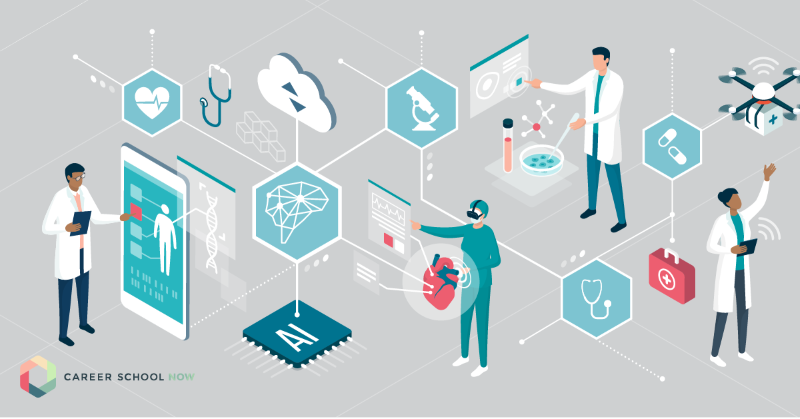How to Enhance Efficiency in Medical Administration with Modern Equipment
How to Enhance Efficiency in Medical Administration with Modern Equipment
Blog Article
Best Practices in Medical Management for Improving Efficiency and Decreasing Expenses
In the ever-evolving landscape of healthcare, the pursuit of finest techniques in medical administration is critical for enhancing effectiveness and suppressing expenses. By incorporating sophisticated innovations such as electronic health documents and telemedicine, medical care providers can improve operations and improve individual treatment. Technology alone is not a panacea; maximizing source allowance and fostering collaborative interaction amongst care groups are similarly essential. As companies aim to stabilize high quality and cost, what strategies should be focused on to achieve these twin goals? The responses to these inquiries hold the key to a much more sustainable medical care system.
Leveraging Advanced Technology
In today's quickly evolving medical care landscape, leveraging sophisticated innovation is no more optional however important for efficient medical administration. The combination of electronic remedies into medical care systems has actually changed the way facilities operate, streamlining processes and improving patient treatment. Electronic Health Records (EHRs) are essential, offering thorough client data that can be accessed instantly by authorized employees, hence lowering redundancy and lessening mistakes. By systematizing individual details, EHRs remove the requirement for cumbersome paperwork and promote seamless interaction amongst doctor.
Telemedicine is another technological development that has actually transformed person communication. It offers benefit for both clients and medical care professionals by making it possible for remote appointments, which can decrease the requirement for in-person brows through and optimize consultation scheduling. Additionally, telehealth systems can prolong healthcare access to country or underserved areas, bridging voids in care delivery.
Additionally, the usage of Artificial Intelligence (AI) and machine discovering is ending up being progressively common in predictive analytics, enabling early discovery of prospective health issues and more enlightened decision-making. These technologies, when integrated successfully, can improve analysis precision and personalize person treatment plans, eventually resulting in enhanced medical care end results and functional performance.
Optimizing Source Appropriation
By tactically managing resources such as workers, equipment, and funds, health care facilities can dramatically boost their functional performance, improve person results, and minimize unnecessary expenditures. The first action in optimizing source allotment includes carrying out a comprehensive evaluation of existing assets and recognizing locations where sources might be underutilized or overextended.
Prioritizing resource allowance based on individual needs and service demands is necessary. This involves lining up resources with high-demand locations, such as emergency treatment or specialized treatments, to make sure prompt and efficient person treatment. Carrying out adaptable staffing models can also enhance labor sources by adjusting workers allotment in response to fluctuating person quantities. Additionally, accepting telemedicine and other technological remedies can reduce physical resource constraints by supplying different avenues for patient-provider communications.
Economic sources need to be carefully checked and allocated with critical foresight to sustain both short-term operational demands and long-term institutional objectives. This consists of investing in training programs that enhance personnel competencies and embracing energy-efficient techniques that lower operational prices (medical administration). Eventually, an optimized source appropriation method fosters a lasting healthcare atmosphere that is receptive, reliable, and financially prudent
Streamlining Workflow Processes
When healthcare centers aim to improve operational effectiveness, improving workflow processes comes to be an essential focus. Effective operations minimize redundancy, eliminate unneeded steps, and enhance sychronisation amongst healthcare experts. This approach not just speeds up solution delivery yet likewise improves the top quality of patient care.

Following, technology assimilation plays a significant duty in enhancing workflows. Applying digital wellness documents (EHRs) and electronic medical professional order entrance (CPOE) systems reduces paperwork, minimizes human check these guys out error, and makes sure information is obtainable to all appropriate workers. Furthermore, leveraging telemedicine systems can simplify individual appointments and follow-ups, decreasing the strain on physical infrastructure.

Inevitably, streamlined operations cause set you back reductions and enhanced patient fulfillment, cultivating a more lasting medical care setting.
Enhancing Data Administration
Building upon structured workflows, maximizing information monitoring ends click for info up being an important part beforehand health care administration. Reliable data management systems are critical for maintaining exact individual records, boosting decision-making, and guaranteeing conformity with regulative requirements. By implementing robust data management remedies, medical care facilities can boost the top quality of client treatment while simultaneously lowering functional expenses.
One trick aspect of improving information administration is the integration of sophisticated digital wellness document (EHR) systems. These systems help with the seamless exchange of individual details throughout various divisions, reducing duplication of tests and lessening errors. A well-designed EHR system supports data analytics, allowing doctor to determine trends and make educated choices regarding person care.
In addition, protecting individual information is critical. Adopting detailed cybersecurity steps, including security and regular audits, guarantees the integrity and privacy of sensitive details. This not just shields clients but additionally preserves the establishment's track record.
Investing in team training is one more essential factor. Enlightening medical care professionals on information monitoring techniques enhances their capacity to efficiently make use of modern technology, leading to improved patient end results. Finally, enhancing data management through innovative modern technology and comprehensive training is vital for accomplishing effectiveness and expense reduction in clinical administration.
Fostering Collaborative Communication
A crucial component ahead of time medical management is cultivating collective communication among health care specialists. Reliable communication is vital for making certain smooth patient treatment, optimizing therapy outcomes, and decreasing mistakes. By urging open dialogue and control across multidisciplinary groups, medical care organizations can enhance their operational performance and reduce unnecessary prices.
Central to this technique is the combination of communication modern technologies such as digital health documents (EHRs) and safe messaging systems, which help with the fast exchange of important patient information. These tools make it possible for healthcare companies to accessibility and share information in genuine time, making certain that all staff member are notified and straightened in their decision-making procedures. Regular group conferences and interdisciplinary rounds can additionally advertise a society of partnership and liability.
Educating programs concentrated on enhancing interaction abilities are company website also essential. These programs can aid personnel develop the capacity to convey information plainly and pay attention actively, hence lowering misunderstandings and cultivating an encouraging workplace. In enhancement, taking on standard interaction procedures, such as SBAR (Circumstance, History, Evaluation, Referral), can streamline the exchange of information, guaranteeing that vital details are shared succinctly and successfully. Inevitably, promoting joint communication causes boosted healthcare shipment and cost financial savings (medical administration).

Conclusion
Incorporating innovative innovation, such as electronic wellness documents and telemedicine, along with maximized resource allocation and streamlined workflow processes, is important for boosting efficiency in medical management. Reliable information administration and cultivating joint interaction amongst medical care teams are essential for reducing redundancies and enhancing care top quality. By focusing on precautionary care and taking part in high quality renovation efforts, health care organizations can attain significant cost financial savings and boosted client results, therefore making certain sustainable healthcare shipment in a progressively complex atmosphere.
Report this page